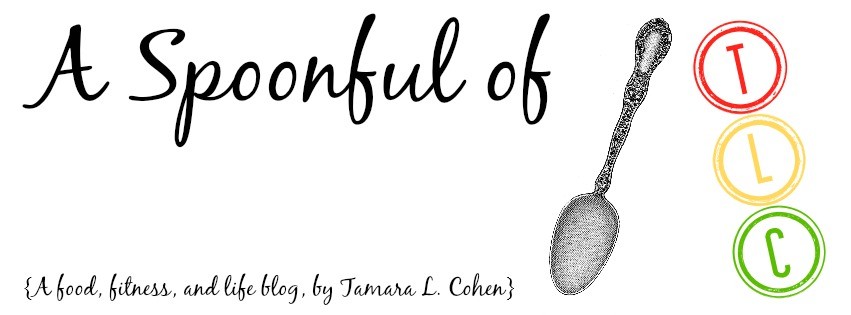Hey, hey, hey!
It feels like it’s been awhile since I’ve been on here. I’ve been busy. Busy with school, busy with friends, busy turning 22. Sorry. I had to do that at some point…
I think I’m going to start a new little series here on A Spoonful of TLC with tidbits of interesting things I learn in my nutrition classes. Just FYI, I’m taking four nutrition classes this semester, so I anticipate that I’ll learn some nifty things! (Nifty? Who am I?) I am preparing to be a Registered Dietician at some point in my life, so I think this information could also be interesting and/ or helpful to any of you out there.
Question for you: What is the best way to get calcium and why do you need to consume calcium?
Let me guess, dairy is the best way and we need calcium for strong bones and teeth.
Don’t worry, that was my initial answer, too. From the time we’re born, we’re told that we need to drink big glasses of milk and eat cheese and yogurt so that we can grow up to be big and strong with nice, healthy bones.
Question: How many servings of the following did you consume in the last 24 hours?
Soymilk, fortified almond milk, milk, orange juice, tofu, cooked leafy greens, beans, almonds or almond butter, cheese, dark molasses, figs, seaweed.
If I’m being completely honest, in the last 24 hours, I have had about a cup of almond milk and a cup of spinach (of foods on that list). Uh oh. That’s not just from the last 24 hours, but most days. I am not getting enough calcium and that’s a problem! Bone mass increases until you’re 30, so now that I’m the ripe old age of 22, I need to get workin’ on getting enough calcium or I could be in trouble later in life. Did you know that you can only increase bone mass until you’re 30? Time is a’ticking!
Some background info: Calcium is a mediator of cellular messages, cell & enzyme regulator, blood clotting, nerve function and muscle contraction and relaxation. In short, you need calcium to live, to move, to survive.
Don’t get me wrong, dairy products are a good source of calcium, but did you know that there is more calcium in a cup of fortified breakfast cereal and a cup of boiled collard greens than in a cup of milk? Shocking, right?! Calcium is found naturally in both plant and animal foods, but you don’t need to consume dairy to get your calcium needs. There is a lot of calcium naturally found in green leafy vegetables such as collard greens and spinach, as well as salmon and sardines (with bones), sesame seeds, chick peas, tofu, soy milk and some legumes.
Just because a food says it provides a certain amount of calcium doesn’t mean your body will absorb all of it and use it (and that goes for any vitamin or mineral). That is what is referred to as bioavailability. Bioavailability is influenced by genetics, aging, nutritional status and other food compounds, such as the presence of oxalates and phytates. Oxalates are found in cocoa, tea, and many vegetables, including green beans, brussels sprouts, collards and spinach (so while spinach is a great source of calcium, you won’t absorb all that you consume).
Another (surprising) thing that reduces our absorption of calcium is consumption of salt. Let me try to explain: If you were to eat 200 mg of calcium, you will only absorb about 40 mg of it, but by consuming just one teaspoon of salt, it will result in the secretion (getting rid of) of 40 mg of calcium. Does that make sense? You consume calcium, eat salt, and it’s like you never had the calcium to begin with.
So, there you have it. Eat your leafy greens, eat your beans, eat your sesame seeds and of course, drink your milk. Get your calcium, kids, so you grow up to be big and strong, with big healthy bones.


